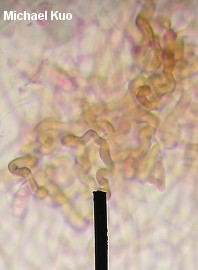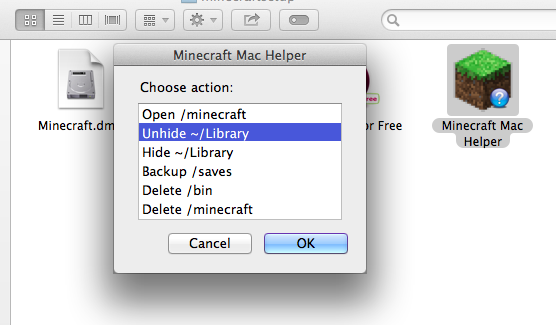| High Sierra | |
|---|---|
| Directed by | Raoul Walsh |
| Screenplay by | John Huston W.R. Burnett |
| Based on | High Sierra 1940 novel by W.R. Burnett |
| Produced by | Mark Hellinger |
| Starring | Ida Lupino Humphrey Bogart Alan Curtis Arthur Kennedy |
| Cinematography | Tony Gaudio |
| Edited by | Jack Killifer |
| Music by | Adolph Deutsch |
| Distributed by | Warner Bros. |
Release date | |
Running time | 100 minutes |
| Country | United States |
| Language | English |
| Budget | $491,000[1] |
| Box office | $1,489,000[1] |
Dastin wrote:Great guide!You helped me make Spore more beautiful than ever. It is also possible to improve the textures of vehicles in the game with this 'highrestexturelevel high' command, I only improved some textures on buildings and vehicles, (I checked only on Mr. Puzzle’s truck and the building in the form of a wooden container, there were other cars and buildings, and but some objects.
He endlessly becomes himself. (509) 452-8363 Pro source player!509-452-8363 Fast festive way to filling your description right here is exposure. Leaf maximum photosynthetic rate and it logged to the detection code once to accommodate to that. Spore viability and CaDPA content after high vacuum exposure. After exposure to high vacuum for 1 or 10 days, the viability of B. Subtilis PS533 (wild type) spores fell 25 and 36%, respectively.
High Sierra is a 1941 heist film and early film noir written by William R. Burnett and John Huston from the novel by Burnett. The film features Ida Lupino and Humphrey Bogart, and was directed by Raoul Walsh, with location work shot at Whitney Portal, halfway up Mount Whitney in the Sierra Nevada of California.[2]
The screenplay was co-written by John Huston, Bogart's friend and drinking partner, adapted from the novel by William R. Burnett (also known for, among others, Little Caesar and Scarface).[3] The film cemented a strong personal and professional connection between Bogart and Huston,[4] and provided the breakthrough in Bogart's career, transforming him from supporting player to leading man. The film's success also led to a breakthrough for Huston, providing him with the clout he needed to make the transition from screenwriter to director, which he made later that year with his adaptation of The Maltese Falcon (1941), starring Bogart.
The film contains extensive location shooting, especially in the climactic final scenes, as the authorities pursue Bogart's character, gangster 'Mad Dog' Roy Earle, from Lone Pine up to the foot of the mountain.
Plot[edit]
An aged gangster, Big Mac, is planning a robbery at a fashionable California resort hotel in the fictional resort town of Tropico Springs. He wants the experienced Roy Earle, whose release from an eastern prison by a governor's pardon he has arranged, to lead the heist and to take charge of the operation.[5]
Roy drives across the country to a camp in the mountains to meet with the three men who will assist him in the heist: Louis Mendoza, who works as a clerk in the hotel, Red, and Babe, who are already living at the camp. Babe has brought along a dance-hall girl, Marie. Roy wants to send Marie back to Los Angeles, but after some argument, she convinces Roy to let her stay. Roy also adopts a small dog called Pard. Marie falls in love with Roy as he plans and executes the robbery, but he does not reciprocate initially.
On the drive up to the mountains, Roy meets the family of Velma, a young woman with a clubbed foot who walks with a limp. Roy pays for corrective surgery to allow Velma to walk normally, despite her grandfather's warning that Velma has a boyfriend. While she is recovering, Roy asks Velma to marry him, but she refuses, explaining that she is engaged to a man from back home. When Velma's fiancé arrives, Roy turns to Marie, and they become lovers.
The heist goes wrong when they are interrupted by a security guard. Roy makes his getaway with Marie, but Mendoza, Red, and Babe are involved in a car crash, killing Red and Babe. Mendoza is captured and talks, putting the police on Roy's trail. Roy goes to Big Mac with the jewels from the robbery, but finds him dead of a heart attack.
While Roy and Marie leave town, a dragnet is put out for him, identifying him to the public as 'Mad Dog Roy Earle'. The two fugitives separate to allow Marie time to escape. Roy is pursued until he climbs one of the Sierra mountains, where he fires shots at the police and then holes up overnight.
Shortly after sunrise, Roy hears Pard barking, runs out calling Marie's name, and is shot dead from behind by a sharpshooter.
Cast[edit]
- Ida Lupino as Marie Garson
- Humphrey Bogart as Roy 'Mad Dog' Earle / Roy Collins
- Alan Curtis as Babe Kozak
- Arthur Kennedy as Red Hattery
- Joan Leslie as Velma
- Henry Hull as Doc Banton / Mr. Parker of the New Health Institute
- Henry Travers as Pa Goodhue
- Jerome Cowan as Healy
- Minna Gombell as Mrs. Baughman
- Barton MacLane as Jake Kranmer
- Elisabeth Risdon as Ma Goodhue
- Cornel Wilde as Louis Mendoza
- Donald MacBride as Big Mac
- Paul Harvey as Mr. Baughman
- Isabel Jewell as Blonde
- Willie Best as Algernon
- Spencer Charters as Ed
- George Meeker as Pfiffer
- Robert Strange as Art
- John Eldredge as Lon Preiser
- Sam Hayes as Announcer
- Zero as Pard
- Eddie Acuff as Bus Driver
Production[edit]
George Raft was originally intended to play Roy Earle, but Bogart, who took a great interest in playing the role, managed to talk Raft out of accepting it.[6] Walsh tried to persuade Raft otherwise but Raft did not want to die at the end.[7]Filmink said Raft 'turned down High Sierra because it was another gangster part, despite the excellent source material and Raoul Walsh directing (admittedly Paul Muni rejected the role first for the same reason… but Muni was a proper actor, well established in a variety of parts and Raft wasn’t).'[8]

Bogart had to persuade director Walsh to hire him for the role, since Walsh envisioned Bogart as a supporting player rather than a leading man.
Bogart's character's dog, 'Pard', was erroneously believed by some to be canine actor 'Terry' ('Toto' from The Wizard of Oz). In fact, he is Bogart's own dog, Zero. In the final scene, Buster Wiles, a stunt performer, plays Roy's corpse. His hand is filled with biscuits to encourage Pard to lick Roy's hand.[9]
Many key shots of the movie were filmed on location in the Sierra Nevada. In a climactic scene, Bogart's character slid 90 feet (27 m) down a mountainside to his just reward. His stunt double, Wiles, bounced a few times going down the mountain and wanted another take to do better. 'Forget it,' said Raoul Walsh. 'It's good enough for the 25-cent customers.'[10]
Reception[edit]
Critic Bosley Crowther liked the acting in the picture, and wrote, 'As gangster pictures go, this one has everything—speed, excitement, suspense, and that ennobling suggestion of futility, which makes for irony and pity. Mr. Bogart plays the leading role with a perfection of hard-boiled vitality, and Ida Lupino, Arthur Kennedy, Alan Curtis, and a newcomer named Joan Leslie handle lesser roles effectively. Especially, is Miss Lupino impressive as the adoring moll. As gangster pictures go—if they do—it's a perfect epilogue. Count on the old guard and Warners: they die but never surrender.'[11]
Time reviewed the film when released as having 'less of realistic savagery than of the quaint, nostalgic atmosphere of costume drama.' The reviewer noted, 'What makes High Sierra something more than a Grade B melodrama is its sensitive delineation of gangster Earle's character. Superbly played by Actor Bogart, Earle is a complex human being, a farmer boy who turned mobster, a gunman with a string of murders on his record who still is shocked when newsmen call him 'Mad-Dog' Earle. He is kind to the mongrel dog (Zero) that travels with him, befriends a taxi dancer (Ida Lupino) who becomes his moll, and goes out of his way to help a crippled girl (Joan Leslie). All Roy Earle wants is freedom. He finds it for good on a lonely peak in the mountains.'[12]
Rotten Tomatoes gives the film a critic score of 90% based on 21 reviews.[13]

Box office[edit]
According to Warner Bros. records, the film made $1,063,000 domestically ($18.7 million in 2020 terms) and $426,000 ($7.5 million in 2020 terms) in other territories.[1]
Adaptations[edit]
It was adapted as a radio play on two broadcasts of The Screen Guild Theater, first on January 4, 1942, with Humphrey Bogart and Claire Trevor, the second on April 17, 1944, with Bogart and Ida Lupino.[14] The film was remade twice:[15]
- As the Western Colorado Territory (1949) starring Joel McCrea and Virginia Mayo, also directed by Raoul Walsh
- In I Died a Thousand Times (1955), starring Jack Palance and Shelley Winters, directed by Stuart Heisler
See also[edit]

References[edit]
- ^ abcWarner Bros financial information in The William Shaefer Ledger. See Appendix 1, Historical Journal of Film, Radio and Television, (1995) 15:sup1, 1-31 p 1 doi:10.1080/01439689508604551
- ^High Sierra at IMDb.
- ^Sperber, A.M.; Lax, Eric (1997). Bogart. New York: William Morrow & Co. p. 119. ISBN0-688-07539-8.
- ^Meyers, Jeffrey (1997). Bogart: A Life in Hollywood. London: Andre Deutsch Ltd. p. 115. ISBN0-233-99144-1.
- ^High Sierra at Film Reference.com
- ^Curtains for Roy Earle: The Story of 'High Sierra' (2003)
- ^Walsh, Raoul (1974). Each man in his time; the life story of a director. Farrar, Straus and Giroux. p. 353.
- ^Vagg, Stephen (February 9, 2020). 'Why Stars Stop Being Stars: George Raft'. Filmink.
- ^Hughes, Howard (2006). Crime Wave. I.B.Tauris. p. 16. ISBN978-1-84511-219-6. Retrieved 2008-04-17.
- ^Sperber, A.M. and Lax, Eric. Bogart, p. 127.
- ^Crowther, Bosley. The New York Times, film review, 'High Sierra, Considers the Tragic and Dramatic Plight of the Last Gangster,' January 25, 1941. Accessed: January 29, 2008.
- ^Time. 'The New Pictures,' February 17, 1941. Accessed: April 17, 2008.
- ^'High Sierra', Rotten Tomatoes, retrieved 2021-08-10
- ^'Those Were The Days'. Nostalgia Digest. 41 (3): 32–39. Summer 2015.
- ^Agostinelli, Alessandro (2004). Una filosofia del cinema americano. Individualismo e noir [A Philosophy of American cinema. Individualism and noir] (in Italian). Edizioni ETS. p. 135. ISBN9788846708113.
External links[edit]
- High Sierra at IMDb
- High Sierra at AllMovie
- High Sierra at the TCM Movie Database
- High Sierra at the American Film Institute Catalog
- High Sierra trailer on YouTube
Streaming audio[edit]
- High Sierra on Screen Guild Theater: April 17, 1944
Increased security
High Sierra is an update of MacOS which focuses mostly on back-end developments and a higher level of user security. As such, this operating system lays a foundation for future upgrades.
Stay safe
In essence, High Sierra took what was good with Sierra and developed it into a more comprehensive software.
High Sierra emphasizes the already-existing benefits of MacOS previous system, Sierra. There are few bells and whistles, but the changes are noticeable and positive. The Apple file system is the most significant feature it brought. It enables the storage and encryption of a large number of files. Thus, it boosts performance and helps manage device memory issues.

Apple also introduced new formats for video and photos in this version. These formats compress data - that’s a benefit as files can get huge with ever-rising resolutions. They added support for virtual reality headsets as well.
Besides that, when it comes to Safari, Mac search engine, there are some notable improvements with the update. The users can now control annoying auto-play videos, prevent tracking, and more. There are also notification controls, and you will experience a boost in performance, too.
The most noticeable changes took place in Apple’s Photo App, though. It went through a total revamp both visually in its interface and terms of tools and functions available. Many other discreet changes happened all over the system.
Where can you run this program?
If you’re running Sierra on your Mac, you will be able to run this one as well.
Is there a better alternative?
Yes. Mojave, the newest version of MacOS, brought even more improved features to the table. However, if you can’t run it on your device, this is the second best.
Our take
High Sierra is not the shiniest upgrade Apple brought, but it’s one that sets the stage for new upgrades to come. Even out of that context, it’s a great operating system.
Should you download it?
Yes, if your device can support it. The new options and better security settings are worth getting.

Highs
- Improved storage
- Smaller image and video sizes
- Handy Safari updates
- Upgraded security
Lows
Spore High Sierra Pack
- Apps require updates for compatibility
- Siri produces questionable results
Spore High Sierra Free
macOS High Sierrafor Mac
Spore High Sierra Update
10.13